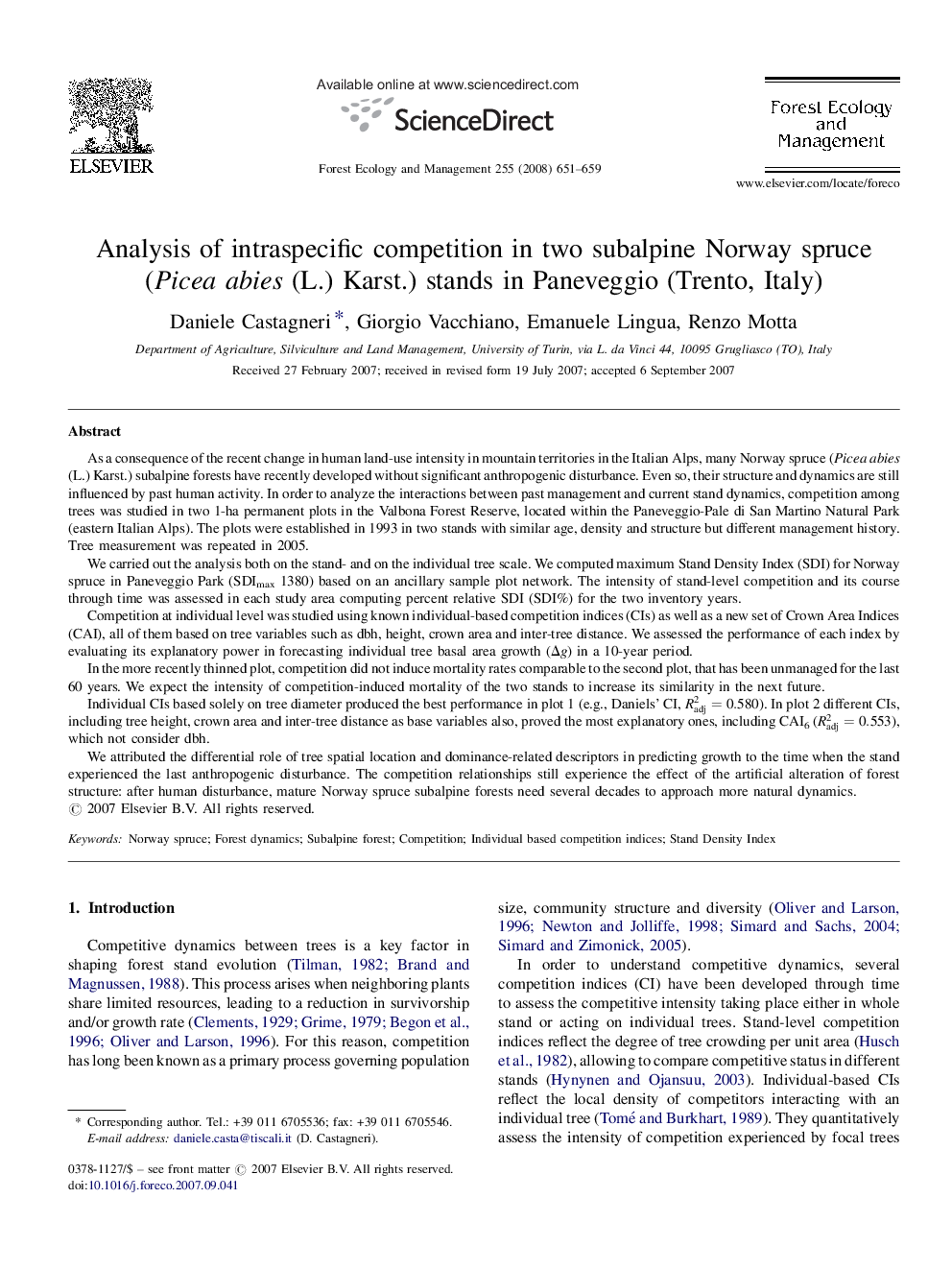| کد مقاله | کد نشریه | سال انتشار | مقاله انگلیسی | نسخه تمام متن |
|---|---|---|---|---|
| 89842 | 159358 | 2008 | 9 صفحه PDF | دانلود رایگان |

As a consequence of the recent change in human land-use intensity in mountain territories in the Italian Alps, many Norway spruce (Picea abies (L.) Karst.) subalpine forests have recently developed without significant anthropogenic disturbance. Even so, their structure and dynamics are still influenced by past human activity. In order to analyze the interactions between past management and current stand dynamics, competition among trees was studied in two 1-ha permanent plots in the Valbona Forest Reserve, located within the Paneveggio-Pale di San Martino Natural Park (eastern Italian Alps). The plots were established in 1993 in two stands with similar age, density and structure but different management history. Tree measurement was repeated in 2005.We carried out the analysis both on the stand- and on the individual tree scale. We computed maximum Stand Density Index (SDI) for Norway spruce in Paneveggio Park (SDImax 1380) based on an ancillary sample plot network. The intensity of stand-level competition and its course through time was assessed in each study area computing percent relative SDI (SDI%) for the two inventory years.Competition at individual level was studied using known individual-based competition indices (CIs) as well as a new set of Crown Area Indices (CAI), all of them based on tree variables such as dbh, height, crown area and inter-tree distance. We assessed the performance of each index by evaluating its explanatory power in forecasting individual tree basal area growth (Δg) in a 10-year period.In the more recently thinned plot, competition did not induce mortality rates comparable to the second plot, that has been unmanaged for the last 60 years. We expect the intensity of competition-induced mortality of the two stands to increase its similarity in the next future.Individual CIs based solely on tree diameter produced the best performance in plot 1 (e.g., Daniels’ CI, Radj2=0.580). In plot 2 different CIs, including tree height, crown area and inter-tree distance as base variables also, proved the most explanatory ones, including CAI6 (Radj2=0.553), which not consider dbh.We attributed the differential role of tree spatial location and dominance-related descriptors in predicting growth to the time when the stand experienced the last anthropogenic disturbance. The competition relationships still experience the effect of the artificial alteration of forest structure: after human disturbance, mature Norway spruce subalpine forests need several decades to approach more natural dynamics.
Journal: Forest Ecology and Management - Volume 255, Issues 3–4, 20 March 2008, Pages 651–659